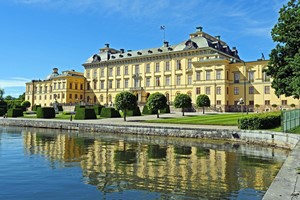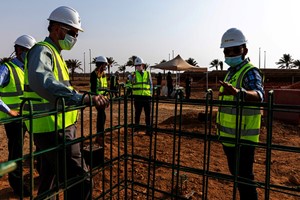Although the Swedish economy slowed slightly in 2016 compared to the strong development in 2015, growth remains positive. Sweden's GDP grew by 3.4% in 2016 driven by domestic factors such as investments into housing development schemes and a high public sector consumption, according to Savills. The previous rapid growth in household consumption slowed somewhat during 2016 as households choose to increase their savings rather than spend. Sweden is experiencing an all-time high population growth where the population reached 10 million inhabitants at the beginning of 2017. The rapid growth is expected to continue and the population is expected to reach 11 million by 2024. The steep population growth will be a significant element for the economic development that brings opportunities as well as challenges. Demand for labor remains stable despite lower economic growth this year. Employment levels have seen growth since 2009 and are expected to continue to grow at a steady rate. The unemployment rate has also continued its downward trend and is currently at just under 7% and is expected to decrease further in the short-term. The Swedish inflation rate continued to grow towards the end of 2016 and the trend is expected to continue this year. Inflation is estimated to continue its upward trajectory but is unlikely to reach the long-term goal of 2% by the end of 2018. In order to support the inflation rate, the Bank of Sweden's monetary policy is expected to continue throughout 2017. The repo rate was left unchanged at -0.5% in February this year, and, a first hike is expected to occur at the beginning of 2018. Investment activity The first quarter of 2017 opened exceptionally well with an investment volume amounting to USD4.6 billion. The volume exceeds the Q1 2016 volume by 5%, which is a clear indicator of a continuous strong investment appetite considering that 2016 was a record year in terms of investment levels. A total of 136 transactions were carried through during the first quarter of 2017; the highest first-quarter since 2008. Despite the high transaction pace, the large investment volume contributed to an average deal size of USD3.4 million 7% higher than the 10-year annual average. Office properties were undoubtedly the favorable property sector during Q1 2017, with an investment volume amounting to USD1.4 billion, representing 29% of the market. Residential and retail properties where fairly even in terms of investment volume, and the sectors each represented approximately 16% of the market. Noteworthy was that storage and industrial properties, tied "The transaction market started out strong in 2017 and both the investment volume and number of transactions marked a significant increase compared to Q1 2016." Peter Wiman, Head of Research, Savills Sweden with residential properties, experienced the highest transaction pace across all sectors where a total of 29 transactions were carried through; 21% of the total number of transactions during the first quarter. Foreign investors increased their activity in Sweden during the first quarter of 2017 which may be a result of that Sweden is considered a fairly secure market in world of political uncertainties. Foreign investors accounted for 30% of the total investment volume during the first quarter, which is significantly higher than the annual average of 16% during the previous five years. This is the first time since the financial crisis where foreign investors have acted as net buyers.


Country Reports - Sweden
Sweden's Economy Paving the Way to Strong Construction Growth
November 2017

During the past decade, Sweden's economic growth was among the highest in Western Europe. Over the last three years, the Swedish economy consistently ranked first among Nordic countries, thanks to strong domestic demand. The mass arrival of migrants played a crucial role, as it prompted government spending, and further stimulated consumption and job creation. Nonetheless, the Swedish economy is set to normalize, as consumer and public spending growths are decelerating, according to Euler Hermes. GDP growth is expected to slow down to +2.2% in 2017 and +2.1% in 2018. This is well below the +3.2% average for 2014-16. 2016 was an eventful year with uncertainties such as the Brexit referendum result and the US presidential election.









